|
In this blog post, we discuss the importance of lead generation strategies. If you have any questions or need any help with your lead generation strategy then get in touch. How To Generate Leads Using Lead Generation StrategiesLead generation is frequently misunderstood and under-valued when it comes to growing a business. The term “lead generation” doesn’t help as it’s not clear to many business owners and start-ups as to what exactly it means. In this blog post, we go through what a lead generation strategy is, and how you can use lead generation to increase your sales. If you would like help with your lead generation then get in touch for a free consultation to see how we can help. What Is a Lead Generation Strategy?A lead generation strategy is a marketing and sales technique used to generate leads for a product or service. It’s based on the premise that to get sales, you first need to have a number of prospects (also known as leads) that will buy from you. Finding prospects is, as the phrase goes “generating leads”. There are varying levels of leads such as cold leads (unlikely to buy or not enough information to know their situation), warm leads and hot leads (ready to buy or are certainly expressing a high level of interest in what you offer). A lead generation strategy involves a plan (and one or more sales and marketing campaigns) to generate leads. Lead generation strategies are often effective because they target people who want what you have but don't know about it yet. Lead Generation Statistics and Fast FactsBefore we get into more detail on how to generate leads, here are some quick facts to consider: - In the United States alone, there are over 50 billion dollars spent annually on lead generation. - The average cost of a qualified lead is $25. - The average conversion rate for a qualified lead is 10%. - Lead generation can be done through many different sources, such as social media and email marketing campaigns. Qualifying Your LeadsA qualified lead is one that you believe is looking to potentially buy from you. If you have 200 email addresses of people who could buy your services but no other information then these are cold - or unqualified leads. If, however, you establish contact with those people in whatever way, you can find out how serious they are about buying. Some of those leads can be removed from your list, while others can be considered as qualified leads. A lead is qualified when they meet your criteria. Make sure you have a set list of qualifications before generating leads because it will be easier to turn them down if they don't qualify than after you have invested time and effort into them. Using PPC to Generate LeadsLead generation strategies are the most effective way for companies to gain new business. There are many different ways that a company can generate leads, but one of the best is by using Pay Per Click (PPC). PPC, also known as pay-per-click advertising is a form of internet marketing that involves the advertiser paying for each click on their ad by potential. A Google Ads campaign, for example, can be used to promote a product or service when someone is actively searching for that service. A hotel in Manchester, for example, might set up a Google Ads campaign so that the advert for the hotel appears when someone searches for “hotels in Manchester”. Using Email to Generate LeadsEmail Marketing can play a critical role in the lead generation process. It can either be used to generate leads or by nurturing prospects and building up the relationship with them so that they will go from being a lead to becoming a paying customer. Lead Generation Strategies can be used to generate leads for a variety of businesses, and they are especially useful when you're just starting out because it's one of the cheapest ways to get customers quickly. Different channels for generating leadsLeads can be generated by many different channels, including sales leads from trade shows and other events, advertising campaigns (such as PPC campaigns) or public relations efforts that attract large numbers of potential customers, and even from social media marketing. Leads can also be generated through methods such as cold calling and direct mail. Cold-calling can be difficult for many businesses for various reasons and although it’s considered by many to be outdated compared to digital marketing, it can still be effective for many industries. How Much Does Lead Generation Cost?Lead generation costs are based on the type of lead that is being generated, how many leads are desired and what methods will be employed to generate them. For example, email marketing can cost as little as £1 per email and the price of each lead will depend on various factors such as the type of products or services, the industry and the channels that are used to reach the target audience. There’s no definitive answer to the question “How much does lead generation cost?”, but if you would like to know more about measuring Return on Investment (ROI) and deciding on the most effective lead generation campaign, then get in touch. We would be happy to help. The integrated approachThe ultimate lead generation strategy is one that’s tried and tested to get results and is set up as a process that’s automated as much as possible. To achieve this requires an understanding of what will work most effectively as well as an integration of marketing tools such as email marketing, landing pages for lead generation and a follow-up process for contacting hot leads.
At Think Twice Marketing, we work with businesses to set up their lead generation process. To find out more and to grab your free consultation, get in touch today. In this blog post, we discuss what an autoresponder is and how you can use it in your marketing. For more information about email marketing and autoresponders, contact us today. Automating marketing with autorespondersAutomation can play an important part in the success of any growing business. The less time you devote to doing small redundant tasks, the more time you will have to devote to strategic and business development activities that require your skills and expertise. Putting an online business on autopilot is fairly easy to do, and much of it can be done by simply using autoresponders to automate simple tasks for you. What is an autoresponder?An autoresponder is software that’s used to automatically respond to customer enquiries. It can be used to set up a series of pre-determined responses, or it can be programmed to respond in a more human-like manner. This software usually either has the ability to send out automated emails or is integrated with email marketing software. Autoresponders are mostly used in marketing for marketing campaigns, or customer support in order to handle large volumes of support enquiries. In this blog post, we are focusing primarily on how an autoresponder can be used to achieve better results in your marketing. Autoresponders in eCommerceIf you run an eCommerce business then an autoresponder is a great way to help nurture the prospect and, if necessary, nudge them back toward making a purchase. Here are some examples of how an autoresponder can be used in eCommerce: Shopping cart abandonment: This is a common issue in online eCommerce. If a website visitor has entered their email address (and some other details) but they haven’t made a purchase on what’s in their basket or shopping cart then you can use an autoresponder to remind them to check out. You can also couple this with a special offer to prompt them further. You viewed this campaign: Similar to the Shopping cart abandonment campaign, you can send an email promoting a product that someone has viewed (or alternatives). If the user is signed in and views a product, you can set up an autoresponder to say “hey, great choice. We notice you didn’t add it to your basket so here’s a button to do that in case you forgot”. Short blast and lead generation campaignsTwo other great ways to use autoresponders are in short one-off campaigns and in lead generation campaigns. A short blast campaign comprises of a series of emails over a short period of time. A business offering a productivity app, for example, could offer a 5-day training on how to improve business productivity with a new email being sent out on a daily basis. When a prospect signs up, they will receive the various educational emails in the order and according to the timing set up in the autoresponder. With a lead generation campaign, a business can offer a free eBook or some other form of “lead magnet”. When a prospect enters their email address on the website to receive the free eBook, they will receive a copy of the book by email, followed by a series of emails over time with further tips, advice and offers. A short blast campaign and Lead generation campaign can be the same thing depending on what you are offering and how the campaign is planned out. Using Autoresponders wiselyAutoresponders are great for businesses that want to grow, but they must be used with caution. Promoting products for sale is one of the most popular uses of autoresponders in online marketing but it can annoy or alienate potential customers if it isn’t done correctly. Sending too many emails or being too promotional is more likely to prompt the reader to hit the subscribe rather than the buy button. What Autoresponder should you use?There are many Autoresponder services available that can be found by searching on Google. Many Autoresponder services offer a free limited service but make sure to check out the features first as well as the upgrade pricing. Once you start using an autoresponder, it can be a lot of extra work if you decide later on to move your data and processes over to a different solution. Aweber, MailChimp and GetResponse are just a few examples of apps that offer autoresponder functionality. A fuller list of email marketing solutions, as well as tips for setting up an autoresponder, are included in How to create a successful email marketing campaign. Need help with your email marketing?If you need help with your email marketing and setting up an autoresponder, get in touch. We would be delighted to have a quick chat with you to understand your requirements and to see if we can help.
Call us today. Facebook Ads can be an effective way to advertise and promote your brand to you target audience - but done badly, it can cost more than you get it sales. In this blog post, we will discuss what Facebook Ads is and how you can get the most out of advertising through Facebook. Below is a short summary video of this article. You might want to watch this first. What is Facebook Ads? Facebook Ads is a form of online advertising where businesses can promote themselves and their products. It has experienced huge growth in the past few years, but with a growing number of businesses advertising, the effectiveness of ads has become more challenging. The basic idea behind Facebook ads is that the advertiser sets up an advert with a budget to reach an audience on Facebook. The ad appears on someone's Newsfeed if they have "liked" their business page or if they have shown interest in similar products or services related to their industry. As well as advertising on Facebook, you can also promote your brand on third-party sites as well as on Instagram. Facebook Ads is an excellent way to connect with your target audience because it allows you to customise what you want your customers to see. With Facebook Ads, you can also tailor your messaging and choose who sees it by setting up a campaign with a defined target audience. You might, for example, want to target people aged 30-40 who live within 20 miles of London and have an interest in reading books, or you might target business owners in New York who have an interest in playing golf… you get the idea. You can pay for ads in various ways such as for ads that lead people to specific landing pages, or based on how many times your video has been viewed. You can also purchase ads on a cost-per-click basis or cost-per-thousand-impressions (CPM). If you would like to know more about the different ways to advertise on Facebook, get in touch with Think Twice Marketing. We would be happy to run through the various options available. Tips for Facebook Ads success Here are some quick Facebook Ads tips for making your campaign a success: Be specific with your targeting Facebook advertising is all about targeting your audience with an advert that will resonate with them based on what they like, who they are, and what they do. The more specific you are with your targeting and with your messaging, the more likely they will respond to your ad. A classic mistake many advertisers make is to target their audience too much on interests. This means that many people outside of their target audience will see the ad, leading to wasted money and less effective lead generation. Imagine you are providing services to plumbers. If you target people whose job role is “Plumber” then you are reaching the right people but, if you target people who have an interest in “plumbing” then this will include anyone who is thinking of becoming a plumber and possibly anyone who is in need of a plumber. If these incorrectly targeted people see or click on the ad then that’s wasted money spent on ads. And to make things worse, they might see the ad instead of someone who actually is a plumber! Also, use language and words that your target audience uses. The more you use your target audiences tone and words, the more likely they will resonate with your ad. Use Facebook Pixel and re-targeting Apple has introduced privacy featues that make re-targeting harder but it should still be used in your marketing. Not everyone uses an iPhone when browsing the internet and accessing Facebook and there is still a huge potential if re-targeting is done propertly. Facebook pixel is code that tracks conversions. Facebook will give you the code which you can then add to your website to track visitors. The Facebook pixel code also tracks any user behaviour related to your campaign. It can track when a user sees an advert, clicks on it, and when they take any action on the website linked to the advert. This helps to understand how effective your campaign is. It also helps with re-targeting. Re-targeting is the process of showing ads to people who have expressed interest in a company’s goods or services. Once a prospect has visited a website or clicked on an ad, they will continue to see related ads. For many people starting out in marketing, this might seem strange but it’s a highly effective way to increase conversion rates. Nowadays, every business with an online presence should have its own Facebook pixel set up for tracking and re-targeting purposes. Create a well-worded ad In terms of Facebook Ads tips, this is possibly one of the most important. A well-written Facebook Ad is essential to the success of a business. A clear and concise message is not only what catches the eye of consumers, but also what instils trust in potential buyers. Would you buy from a badly worded ad or one that has spelling mistakes? A good advertisement should also never be too complicated or too difficult to understand. It should be well worded and designed to appeal to your target audience. The most successful advertisements are those that are able to communicate specific benefits and value to their target audience. They should also have a strong call to action. Need help with your advertising? We hope you have enjoyed this blog post, full of Facebook Ads tips to grow your business. If you want to take your Facebook Ads campaign to the next level then help is available. At Think Twice Marketing, we specialise in creating Facebook and Google Ads to get you results. We work with clients to properly define the target audience and messaging so that they get the results they deserve. If you would like help to ensure that you don’t waste money on ineffective ads then get in touch today. Facebook Ads TipsOver the years, I have heard plenty of advice or opinions from small business owners and marketers on what marketing activity they should do, and why. Statements such as ‘I need to be on Instagram because that’s where everyone is heading to’ and ‘I should build up an email list to several thousand that I can market to’. A lot of this is great advice but there is one small challenge that we all face… time and resources.
There are only so many hours in a day, and any business serious about growing profitably must work off a limited budget so, if you want to make your sales and marketing as effective as possible and get the best results for your business, here are 3 marketing facts to consider: It’s cheaper (and easier) to service existing customers than to find new ones Research shows that it’s cheaper to build a loyal customer base who make repeat purchases than to try to acquire new customers. Existing customers know your brand, have already purchased from you and trust you. New customers are less trusting and in many instances, the relationship with them needs to be built up before they will make their first purchase - and you start to build trust until you have spent money reaching out to your audience! According to Forbes*, “It’s 7 Times Less Expensive To Keep A Customer Than To Acquire One” while it’s “FIVE TIMES more profitable to spend marketing and advertising on retaining current customers than it is to acquire new customers”. Whether you have a loyalty scheme with bonus points and stamps or you simply re-establish contact with previous customers to build up your relationship, these marketing activities may provide you with much greater sales - and profits than spending money finding new customers. Posting on social media isn’t the most effective way to find new customers Of course, we still need to focus on finding new customers for long-term growth, but many businesses are disappointed when they don’t find enough customers from directly posting on social media. There are many advantages to posting on social media such as building trust, providing social proof and turning potential customers into brand advocates who are fanatical about what you do - but there are more effective ways to get more sales. Let’s look at some quick facts… 1. It can take weeks, if not months to grow your followers or contacts on platforms such as Facebook or Instagram. 2. For many small businesses, the majority of fans and followers are people that are established. They are either existing customers, friends or contacts. Not potential new customers. 3. Only a small percentage of ‘fans’ see your posts** The figures linked to the above facts vary for each platform and on how successful certain campaigns are, but let’s look at some realistic numbers… Imagine that after 3 months, you grow your Facebook business page to 500 fans organically (without using ads) and that 20% (100) of them are potential customers who are likely to buy within the next 60 days. When you post on Facebook, it’s likely that only 5% of your fans will see your post. That’s 25 of your 500 fans. If your post is to reach a potential new customer then the 25 people that see that post need to be among the 100 out of 500 that are customers. The chances that a potential customer who is ready to buy from you will see the post is very low. The chances that they will also take action and click on a link in the post is even lower. On the other hand, creating a Facebook Ads campaign can help you to reach thousands of potential customers very quickly, and for a relatively small fee. This is much more effective than spending months growing followers and posting on social media, hoping that you will get steady sales as a result. Another way to reach more people effectively is by reaching out to an established audience that someone else has. I talk about this in my book ‘17 ways to grow your business at zero cost!’. Goldfish have a longer attention span than humans Ok, so this title is a little bit attention-grabbing but research shows that we now have an attention span of less than 8 seconds (which is about a second less than a goldfish). This isn’t to say that goldfish are more intelligent, but it does highlight how quickly we are distracted in the modern era by the enormous amount of information that’s ‘thrown’ at us, whether that’s adverts, the phone with sound notifications, a status update on Facebook or something else. So what? With such a short attention span, it’s absolutely critical that your titles or headlines grab the attention of a potential customer as quickly as possible. If the headline in a marketing campaign doesn’t make the customer stop to see what you are saying, then you have lost them already. Here’s an interesting question - if you write an email campaign or blog post, how much time do you spend on the heading or subject line? Do you spend any time looking at the best possible headline or do you just stick in a headline at the last minute in an attempt to get your campaign running? If the headline doesn’t grab the attention of your audience then the rest of the content is wasted, as they might never read it. Above are just a few marketing facts worth considering when designing marketing campaigns. For more insights into the way the customer thinks, check out my book Psychology in Marketing and Sales. Need help planning your marketing campaigns and getting better results? Get in touch for a free marketing review. *https://www.forbes.com/sites/tjmccue/2013/02/04/warning-is-your-new-customer-coming-back-4-steps-you-should-take-now/#1398dbcb7feb **Figures show anything from 5-10%. This article provides further evidence: https://www.causely.com/blog/why-only-ten-percent-of-your-facebook-followers-see-your-posts#:~:text=It%20stands%20to%20reason%20that,or%20less)%20of%20your%20followers.
The number three is a magical number which if used properly in your marketing, can help get better results. I was trailing through my archived emails the other day when I came across an email talking about how remembering numbers is easiest when they are grouped into sets of three, and it got me thinking. How can this apply to marketing and sales?
Using the concept of grouping things into 3 means that you can do the following:
The way that the power of three works is simple (I could say I will explain it in 3 simple steps but on this occasion, I won’t). On its own, a single number, price or product seems ‘lonely’. It’s not comprehensive and there’s nothing to compare. The human mind can absorb a lot more information than that so lets at least double it… Two is good, but it could be better. If I ask you to remember a set of numbers, let’s say 702393, you could remember them individually as six separate numbers. You could remember them in groups of two, such as 70, 23, 93 or in groups of three such as 702, 393. You are more likely to remember them - and longer groups of numbers, in groups of three. In his book, How to Write Short, author Roy Peter Clark talks about how using the rule of 3 can be more entertaining and satisfying as well as being more effective. Before we apply this to marketing, let’s consider some real-world examples of how three is being used: Boris Johnson, the UK Prime Minister, was involved in using a simple 3 worded slogan during the EU referendum campaign that was simple and easy to understand: Take Back Control. He then became Prime Minister and won a general election with the three worded slogan ‘Get Brexit Done’ which almost seemed like his answer to everything… but it worked. In 2020 during the COVID-19 outbreak, he also made the message clear ‘stay home, protect the NHS, save lives’. Ok, so the first and last part are only 2 words, but the slogan is split into 3 sections that are easy to understand, memorable and made sense. Staying at home helped protect the NHS and helps to save lives. The power of 3 can be covering 3 words in a slogan or three individual concepts. Martin Luther King Jr., the civil rights activist, often used the power of 3 with lines such as “insult, injustice and exploitation” in one of his speeches* followed by “justice, goodwill, and brotherhood.”. Listing 5, 6 or even 10 things would have been harder to remember and would have diluted the message. Listing three things also makes the presenter seem more knowledgeable. Julius Caesar said “I came, I saw, I conquered”, Winston Churchill once said “Blood, sweat and tears” while the American Declaration of Independence says “Life, Liberty and the pursuit of happiness”. The power of three is not new, but it’s often forgotten when trying to make marketing more effective. Using it in your marketing In my book, Psychology in Marketing and Sales, I talk about Decoy Pricing which involves offering a third pricing option. This third option increases sales conversions and also results in customers opting for higher-priced products or services. This works for various reasons, one of which is that it takes the mind away from comparing lower-priced products, or not buying at all. In your marketing communication you can also use the power of 3 as follows:
Here are some examples to consider: An accountant might highlight they offer ways to save on tax, avoid fines and grow your business as the main benefits. A web designer might increase the value of a service by offering a 3 in 1 package: web design, blogging and social media for one single price. A software company might communicate that their product can be set up in 3, easy to follow steps. A fashion designer might use a slogan such as ‘look great, feel amazing, be different’ Whether you use 3 or another number in your marketing, it’s important to keep messages simple and easy to understand - while making your product attractive. If you would like help defining your marketing messaging and communicating to your customers then get in touch today. *His speech “Non-Violence and Racial Justice”
Instagram is a great platform for engaging with your target audience and although it depends on your business, Instagram typically achieves more likes, follows and reach than other mainstream social media platforms. It does, however, have one major drawback - it’s harder to organically drive people to your website.
Anyone using Instagram for business will be aware that you cannot include clickable links in standard posts to your feed and links are only possible in Stories if you have over 10,000 followers (which everyone has, right?). The only clickable link for most Instagram businesses is the one that appears in their bio. If you are a regular blogger or a business trying to promote a special offer - and want to use Instagram to increase visitors to your website then it can be a challenge. How to get more click-throughs from your Instagram account
Here are 4 ways to generate more click-throughs from your Instagram profile so that you can drive visitors to your website.
Instagram Ads When you advertise on Instagram, the ads are not just clickable but you can also reach potential new customers who don’t yet follow you by defining who your target market is. If you are running a marketing campaign, for example, with a special offer then using Instagram Ads is a great way to find new business. Advertising on Instagram costs money, making it less attractive for regular bloggers if you want people on Instagram to visit your blog posts. When I refer to ‘Instagram Ads’, I’m talking about all forms of advertising on Instagram. It’s possible to advertise on Instagram by setting up a Facebook Ads campaign as well as advertising directly on Instagram. Copy and Paste The simplest and cheapest but the least effective of the four ways to drive Instagrammers to your website is to include a link in your post and ask them to copy and paste it into their browser. Many people won’t have the desire (or knowhow) to copy the link and open the browser to paste in the link. On a desktop is easier but since Instagram is seen by almost everyone on a mobile phone then this makes the task even harder. Only people who are super keen to visit the link will spend the time copying and pasting the link. Visit our bio As well as having the link in your post, you can also include wording to tell them to use the clickable link in your bio. Visiting the bio and clicking on the link is much easier than copy and pasting a link into a browser but it’s not ideal if you want to send people to different pages. You can’t, for example, send people directly to your various blog posts if you are publishing articles on a weekly or monthly basis. The ultimate way to drive Instagram followers to your website
The above 3 options overcome the issue but there is, however, a better solution...
Use a multiple links tool At Think Twice Marketing, we use Shorby. An app that allows you to have a selection of links available when someone clicks on your bio link. Although the bio can only have one clickable link, multiple links tools like this allow you to create a mini pop up menu on your phone with multiple links. These links can be easily edited or removed and can include links to specific blogs, your home or contact page or even to WhatsApp or Email so that they can contact you directly. Using a multiple links tool allows your audience to quickly find the page you want them to visit on your website directly from your Instagram bio. All you need to do in posts is tell people to click on the link in your bio. You can see how we use a multiple links tool by visiting Think Twice Marketing on Instagram and clicking on our bio link. If you would like multiple links set up in your Instagram bio, get in touch or view the Instagram multiple links service we offer in our store. In my book ‘Psychology in Marketing and Sales’, I talk about the power of fear and how it can be used to generate sales - but before we answer the question as to whether you should sell based on fear, let's first understand what we mean by the word fear itself. Fear probably sounds worse than it is and we aren't talking about scare tactics, threats or anything unethical (sorry horror movie fans - this isn't’ for you!). Fear is about demonstrating what somebody might be missing or losing out on if they don't have your product or service. An example of this could be how you can avoid becoming unhealthy or ill by buying a fantastic range of branded healthy foods. This contrasts to selling products based on the positive benefits. Using the last example you could promote the brand of health foods by saying ‘get fit, be healthy and have a great active life’ by buying this great brand of healthy foods. Should you sell based on fear?When it comes to promoting the benefits of your product or service, selling based on fear has been proven to be more successful but if it isn't done correctly then it could backfire and damage a brand reputation or least be seen as being too negative. Here are some examples of effective positive and fear-based messages for different types of businesses. How do you feel when you read the two versions? Do the different statements impact the way you feel differently? 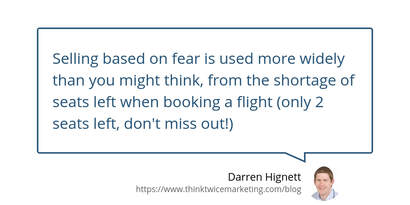 Enjoy a happy retirement by investing in a pension now Don’t lose out on a happy retirement with limited money to live on, invest in a pension now Protect your PC from viruses with antivirus software Avoid losing data and precious time recovering your PC with antivirus software Beat the queues with fast-pass Make sure you don’t waste hours queuing up. Grab your fast-pass now There are benefits to using both styles and a mixture of both is usually the best option. Selling based on fear is used more widely than you might think, from the shortage of seats left when booking a flight (only 2 seats left, don’t miss out!) to pensions, investments and car breakdown cover (don’t get stranded on your own with your car broken down…) to the range of every day offers you see telling you that if you don’t take advantage of the offer in the next 2 hours then you will miss out. In fact, there has even become a widely used term we now use to describe one of our biggest fears - FOMO (fear of missing out). The next time you work on your marketing, consider how you can develop your messaging and the benefits by pointing out both what’s great about what you offer AND what your potential customer could be missing out on. If you would like to learn more about how to promote your products and services based on the way the human mind works then why not grab a copy of my very affordable book Psychology in Marketing and Sales - but be quick, it’s so good I might have to put the price up soon! 😃 Want a recap? The video below is a summary of this blog post. Don't forget to subscribe to our channel on YouTube for more videos! Having an effective call to action is important in any marketing campaign. Without a call to action, potential visitors to your website or any prospects that see your marketing activity are very unlikely to buy from you. If you don’t know what a call to action is, or would like to understand what is in more detail, then read our earlier blog post What is a call to action in marketing? 6 ways to make a call to action that generates leadsHere are some tips on how to make a call to action that generates leads for your business: Use orange and white Different colours impact the way we interpret something and how we react. Blue, for example, conveys trust, yellow conveys cheap or low cost while black conveys a more professional image. Depending on the offer and message of your marketing campaign you may want to use a different colour but we recommend using an orange box or button with white wording. Orange conveys urgency and urges the visitor to your page to take action and click. White is the best colour for making the call to action easy to read. Have an enticing offer and wording I have often talked about power words such as ‘now’, ‘only’ and ‘exclusive’ to urge the potential customer to take action but it’s more than just about the use of power words. The offer needs to be enticing as well. Ask yourself the question ‘would I take up this offer’. You may also want to ask colleagues or your closest customers for their feedback. Position it at the top The call to action needs to stand out and be easily accessible - and there’s no better place than having it at the top of your website or other marketing materials. In many circumstances (such as blog post or printed materials) you may find a good reason to have the call to action at the bottom or end of the content after the reader has looked through the content and understood what it’s all about - but you can have it at the top as well. As many as 80% of visitors to a landing page or website don’t scroll or read the content through to the bottom. If you only have a call to action at the bottom then most visitors won’t get to it so that they can take the action you want. Request as little information as possible There may be circumstances where you need information from the person taking action - an email address to send them something for example, but always work on the principle that the more information you request, the less likely they are to complete the process. No matter how good the offer is, there will be an increasing number of people who will not take advantage of what you are offering because they don’t want to have to supply the information required. A well-known problem faced by eCommerce businesses is shopping cart abandonment. Even when someone has found the product they want and added it their cart, they still give up before the process has finished. There are many reasons for this and one of them is the hassle of providing the information they need to. If you have a landing page offering a FREE guide and you want their email address to send it to them (and to market to them afterwards as part of the lead generation process) then it’s best to only ask for the email address and nothing else. Asking for contact number, name, address or anything else will increase the chances of them not pressing the call to action button. Reduce the number of clicks Similar to the above, the more clicks (or taps on a mobile device) the less likely someone is going to take action. Avoid redirecting a user to another page or sending them to a form to fill in. A call to action should be simple, straightforward and easy for the potential customer to action. Limit the distractions If you are creating a landing page to offer a free guide or to get in touch with you then your primary focus might be to ask for an email address and get the visitor to hit the call to action button. Anything else that's on that page acts as a distraction and reduces the chances they will complete the process. It might be tempting to add links to your social media, the About Us page and other offers but the mind is easily distracted and customers are easily lost! Ideally if you are spending money advertising and promoting the offer, you should have just one call to action - the one that captures contact details and offers what you are promoting. Why waste money driving people to your site, only to have them distracted by reading your latest blogs posts? I talk about various ways to create a landing page that converts in my book How To Create A Perfect Landing Page. If you would like help with creating the right marketing campaign and call to action then Contact Think Twice Marketing today for a FREE initial consultation. The terms "Call to action" sounds fairly straight forward but, in reality, many business owners, sales teams and marketers fail to grasp what a call to action is - or should I say, what an effective call to action is. In this article, we will discuss what a call to action is, how it should be use and how to make it as effective as possible. What is a call to action in marketing campaigns?A call to action is, as the name suggests, a call or message to prompt someone to take action - and while this sounds straightforward, it's often under used or under-estimated in how powerful it can be.
Many marketers either fail to have the right call to action, position it badly or don’t have a call to action at all in their marketing! The call to action (or CTA) can vary depending on various factors such as the type of campaign, the channel being used and the how ready a customer is to buy. In printed marketing and on a website the CTA could be a special offer and with a face-to-face meeting or phone call with a potential customer the CTA could be to arrange the next meeting or to email more information. Take it steady, or get to the point? For most businesses there are always customers who are ready to buy and customers who want to find out more about your brand, what you offer and if you are a trusted brand to buy from. Both types of customers should be targeted with different marketing campaigns. The customer who is willing to buy is more likely to accept a call to action that’s direct, such as ‘if you order today then you will receive an extra month for free and 20% off’ but a customer who is still in the early stages of making a decision is more likely to need a softer approach as part of a longer sales. In this case, offering a call to action such as a free guide on how to achieve something or another offer that isn’t immediately going to get the sale is more effective. In my next blog I will include more detail on how to make call to actions more effective but here are some ways you can be more effective in your marketing: Positioning A call to action needs to be easily accessible and having it at the top and the bottom of marketing materials and landing pages is more effective. If your website has lots of images and words then the call to action needs to stand out and having it visible at the top makes it easier to find. Have a CTA! It sounds obvious but it’s easy to forget a call to action. Check your marketing and communications to make sure you have a call to action as much as sensibly possible. This should include web pages, marketing materials, blog posts and your email signature - even if it’s just a link to drive someone to read your blog posts. Make it desirable, even irresistible! Sorry but ‘click here’, ‘sign up’ and ‘submit’ don’t get me excited and want to take action. Signing up and submitting are also considered negative subconsciously (are you ready to submit or commit to ‘signing up’ even if it’s just for a regular email newsletter?). Phrases such as ‘save me money’, ‘show me how’ and ‘join’ are more powerful and more likely to prompt a potential customer to take action. In my book, How To Create A Perfect Landing Page, I talk about how CTAs are possibly THE most important element in a landing page if the aim is to convert visitors into paying customers. You can find out more by grabbing a copy of my easy to read book on Amazon. If you need help designing more effective marketing campaigns and call to actions then get in touch for a free marketing review. When it comes to online advertising, it doesn't get any bigger than the two tech giants Google and Facebook. But, which one is best for advertising your business? The aim of this blog post is to discuss the pros and cons of using Facebook Ads and Google Ads (previously Google Adwords). We won't be discussing the in-depth details of the various ways you can advertise on the two platforms. Facebook Ads or Google Ads?While both platforms allow you to advertise on third party websites as sponsored ads, Google stands out in one important way - Google search. Adverts created with Facebook that appear on Facebook, Instagram and other sites can be considered to some extent as 'speculative'. Yes, you can define your target audience including their interests, their age, location etc but someone seeing the advert is less likely to be in 'buying mode'. A seller of training equipment for playing hockey might be able to target people such as 'anyone who lives within 25 miles of New York, has an interest in hockey and is aged 25-44' but that doesn't mean that person who sees the advert is interested in, or wants to buy what's on offer. They might not play hockey and only have an interest in watching it. With Google, you appear when people are actively searching for what you sell. Using the above example, a person who wants to buy a hockey stick has already made a conscious decision to find out more about the various types or is ready to buy. They are already further into the decision making sales process and are likely to search specifically for 'hockey sticks' or 'buy hockey stick'. This means you are appearing to people who are genuinely interested and are closer to buying. With Facebook you might need to reach out to more people to generate sales. That doesn't mean Facebook isn't worth considering. Is Google Ads better than Facebook Ads?Set up correctly, Google Ads can be highly effective but that doesn't make it an outright winner compared to Facebook Ads.
Facebook Ads has many advantages. It tends to be lower cost pay per click, it has access to an audience that's in the billions and there's the opportunity to educate people who may don't think they need your product... but they do. Facebook Ads, like Google, also allows you to do re-targeting so that your ad will appear when you have visited a similar website - although recent privacy changes by Apple have made this harder. If you had to decide which platform to use then it will depend on your budget, objectives and industry you are in. You may, for example, have the objective to raise awareness of your new product during a product launch and decide that Facebook is best for that. Facebook is also great for short-term promotions, allowing you to reach a lot of people in a short period of time. If you would like to know more about Google then consider our online course Getting to to the top of Google. This course covers Google Ads as well as SEO (getting found on Google without spending money on adverts). Personally, I prefer Google but that doesn't mean it will always be the right solution for your business. Consider your objectives and what you want to achieve before making a decision. You may want to use both platforms to be more effective. If you need help with online advertising, contact Think Twice Marketing. |
written byThe opinions in these blog posts are those of marketing expert and book author Darren Hignett. Categories
All
Archives
October 2022
|
|
Open 9 am - 5 pm
Tel: 07769 331 247 |



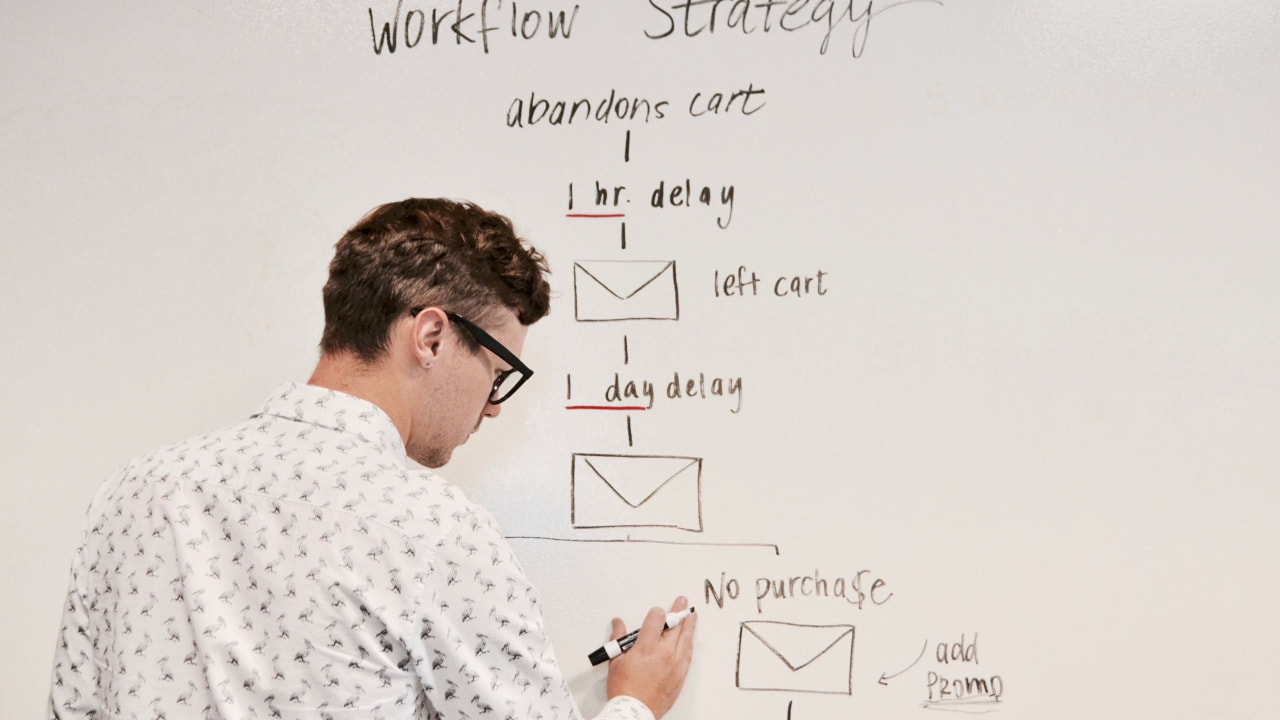


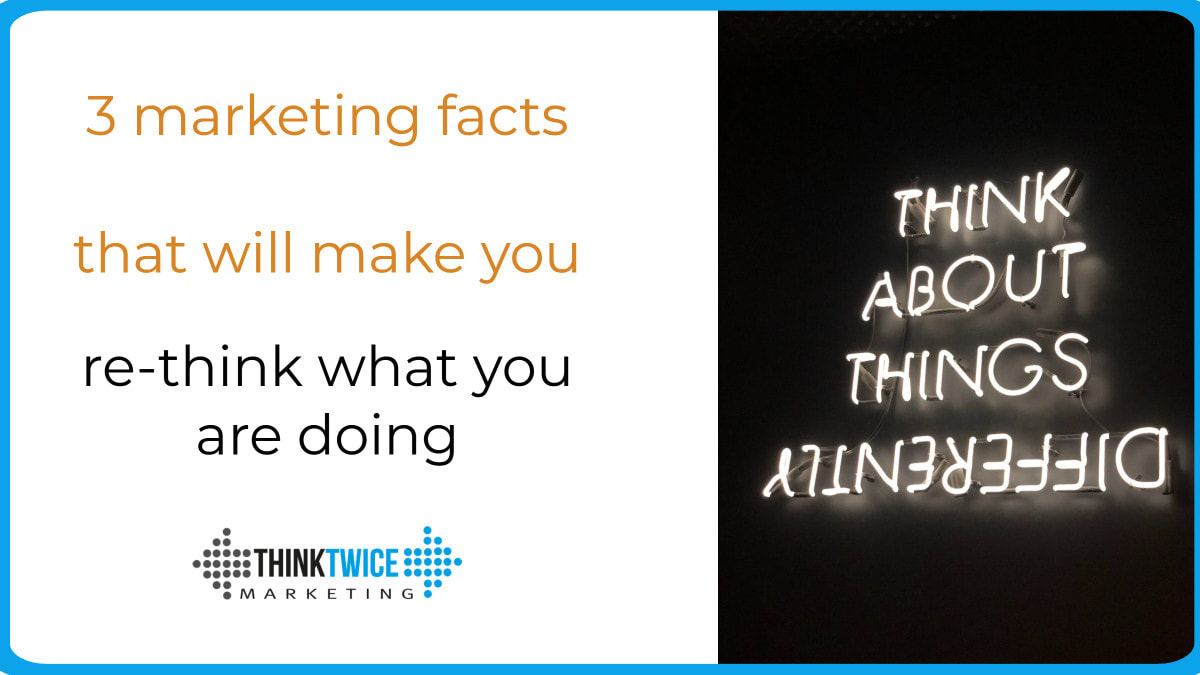




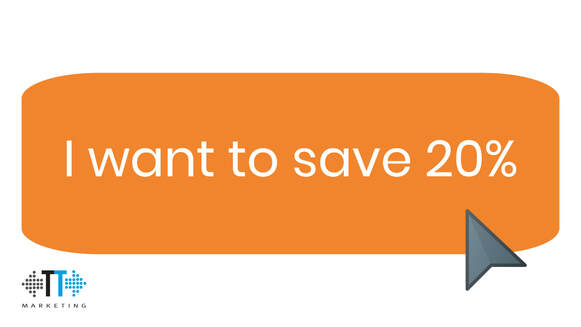
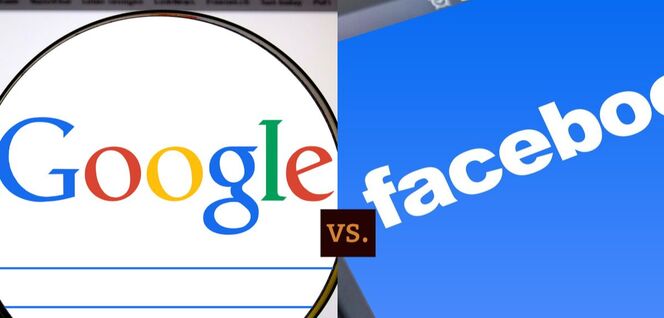
 RSS Feed
RSS Feed